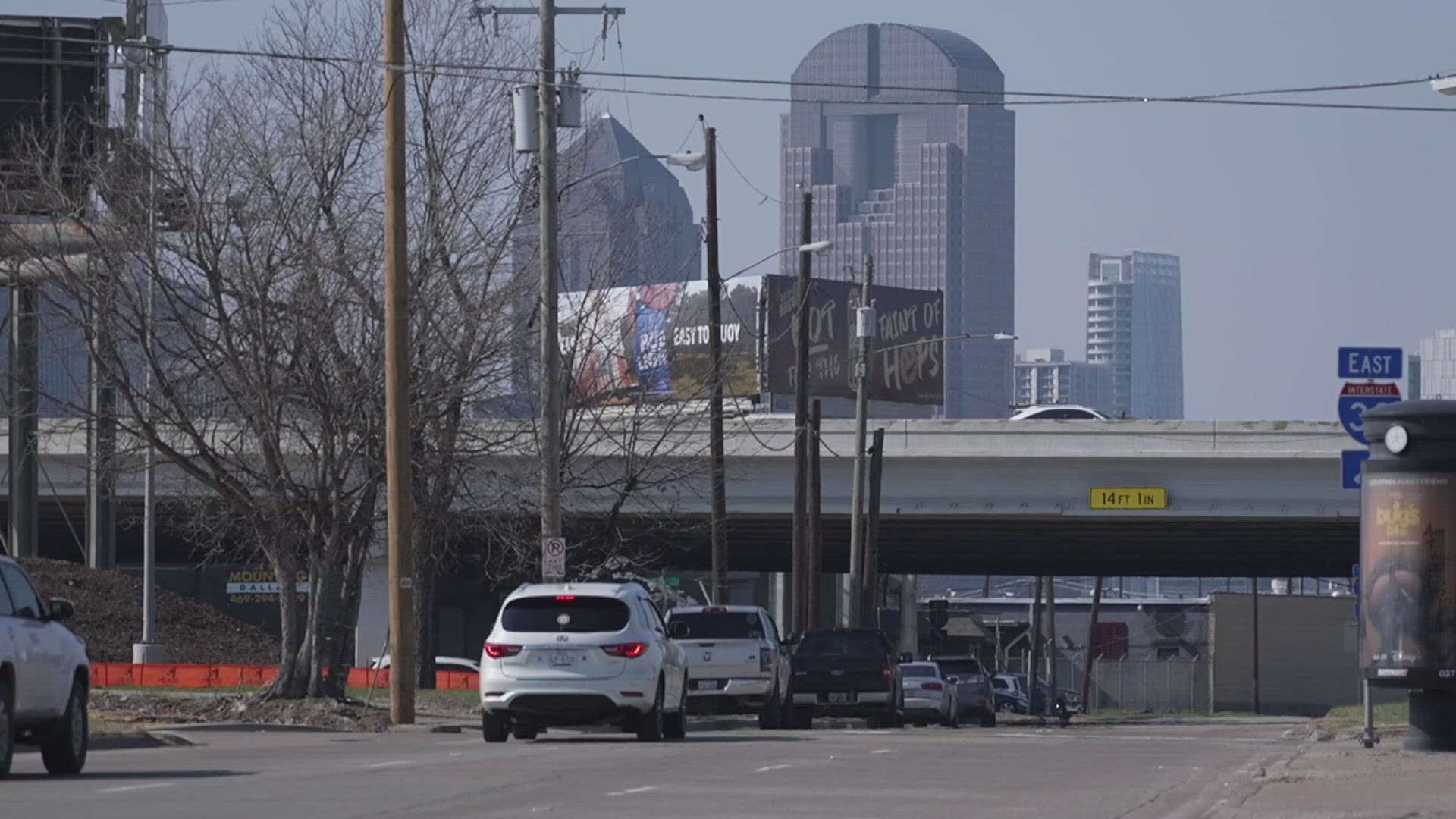DALLAS — When it boils down to it, there is one particular focus on some Dallas leaders’ minds.
“It’s all about connectivity, connectivity, connectivity,” said Omar Narvaez, Dallas City Council member representing District 6 and Transportation and Infrastructure Committee Chair.
For decades, Narvaez said there has been division as Interstate 30 divides South Dallas neighborhoods from Downtown Dallas.
“It’s amazing to think that in the 1950s and 1960s when the interstate highway plan was created that it literally separated neighborhoods which destroyed a lot of neighborhoods," Narvaez said. Here we are what 70 years later at most and we’re now into the thought of reconnecting."
North Central Texas Council of Governments began drafting recommendations to link Downtown Dallas to Deep Ellum to Fair Park. However, one question lingers.
“How do we make sure that we can get people to and from easily and not impact our neighbors here in the community of South Dallas,” asked Alyssa Arnold, Fair Park Chief Impact Officer.
Arnold said connectivity would come in handy for Fair Park. “We’re going to continue to be a site for large events, but we’re looking to increase our daily usage here. So, having people come and go at any time of day,” Arnold said.
In public meetings, community members have been able to see drafts of the plans which include adding bike lanes, parking, changes to transit and traffic on various streets such as Exposition and Parry Avenues.
Read a recent multimodal study here:
“There’s a lot of broken streets here, as you know, with the creation of 30 and 45 and all those things. There’s a lot of confusion around all that,” said Arnold. “I know in Deep Elum, there are a couple of roundabouts that are challenging just from a daily use standpoint.”
Some may wonder with changes on its way what that means for current residents.
“Folks that are hesitant or nervous, we have to grow and change in order to make things advance and we are putting policies in place to keep people in their homes and make sure that folks are able to stay and age in place,” Narvaez said.
There will be more public meetings for community input and a final report is expected this summer. Until then, Narvaez said this is the time for residents to be heard and voice what connectivity looks like for them.
“They need to stay engaged with their council member, stay engaged when we have community meetings to make sure they say what they want," Narvaez said.

